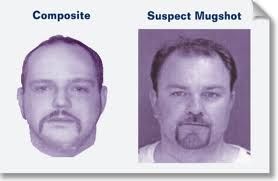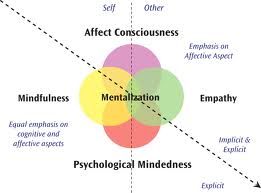For those of you who missed last week’s post, it began with the paragraph below (in italics):
The victim, Paul W. sustained massive head trauma, was shot point blank and then scorched Paul W beyond recognition. Police found his remains moldering in an isolated sinkhole off Delaware Bay. Clues to his identity were microscopic. Dental traces led nowhere. Paul had been one of those rare few to get through life without significant dental work. Positive identification hinged on analysis of mitochondrial DNA.

Paul W
beyond recognition. Police found his remains moldering in an isolated sinkhole off Delaware Bay. Clues to his identity were microscopic. Dental traces led nowhere. Paul had been one of those rare few to get through life without significant dental work. Positive identification hinged on analysis of mitochondrial DNA.
The victim had been part of a triangle. The prime suspect’s wife had been the victim’s lover.
I contrasted the detective’s mindful consideration of evidence leading to the identification of the alleged killer to the flip manner with which he came to a conclusion about the suspect’s sanity.
The detective remarked (paraphrased here): “The funny thing about this slaying is that it was committed by a sane person. The murderer had an honor code. He felt that the victim had turned his wife against him, and therefore it was his sworn duty to eliminate this man. Because he felt the victim had taken away his last chance for happiness.”
As Antonio Damasio and other prominent neuroscientists claim, trying to understand a person’s thinking without understanding the emotional backdrop that illuminates that thinking is self-defeating.
Understanding of someone’s thinking – including their ‘honor” or moral codes – comes from examining the quality of emotion that has combined, like an amalgam, with their thoughts.
Prior to the 1990’s - referred to in the media as the ‘Decade of the Brain’ – the view that a man’s thinking about himself might explain his behavior was widely accepted. Cognitive therapy was a dominant clinical trend and the power of self-talk in shaping emotion was held up as the key to creating therapeutic change.
Profound innovations in technology – including PET and CAT scans – combined with ingenious experimental designs—have resulted in a body of research that supports the idea that emotion – not thought – is primary to understanding and modifying psychic identity. Self-talk affects us; however, emotion shapes self-talk.

using clues
Psychopaths are often described as having “no conscience.” Recent laboratory testing reveals shocking inadequacy in their capacity to experience emotion. Certified psychopaths, shown pictures of injured children, demonstrate the same (lack of) emotional intensity in their responses as when they view pictures of books on a library shelf. Non-psychopathic participants in the experiments by comparison evinced strong neurological responses to the same images. Yet many psychopaths are able to think clearly, to plan and sequence complicated schemes. Their problems lie not in the domain of reason/rationality; they lie in their inability to feel.
People whose brains are dysregulated in this way – with no emotional compass – cannot balance thought and feeling – they are unbalanced. This balance, being able to temper thought with emotion and vice versa is an essential aspect of sanity.
Honor codes derive, within many cultures, from brutal circumstances. Back in the old country – whether it is Italy, Afghanistan, Pakistan, China, Japan, Mauritania, Niger or any of thousands of other lands – traumatic events give rise to customs in which responses – codified responses, sometimes called honor codes -- bring a sense of order to the chaos and futility that forms in the aftermath of trauma.
Having a code, like having a contingency plan, provides a ritualized way of thinking about how to act under extreme circumstance. Embedded in this contingency plan is hope that feelings – of being overwhelmed or out-of-control -- can be mastered.
Inter-generational transmission of traumatic response patterns – via the honor code -- coupled with the immediate stress of marital infidelity, contributed in this situation to Paul W’s demise.
But what of mindfulness? Is there any place for considering the relationship between mindful-thought-and-behavior and sane-thought-and-behavior?

Do we want to say, as a culture, that we see no connection whatsoever between the two? Applied to this investigation – are we willing to say that the killer was sane and at the same time as distant from mindfulness as it is possible for a person to be?
Viewing the relationship between a person’s mental functioning and their subjective sense of their identity from within the shadow of a murder case brings certain elements into high relief. In considering what a person does in relation to who a person is, when murder is our context, we find it hard to separate the function of our investigation, its utility – the assignation of guilt or innocence – with what we may believe are larger elements that come into play. Larger elements such as the perpetrator’s control or lack of control over his actions for example.The act of murder may represent a person's core identity. Or it may signify, were we privy to the facts and intimate circumstances of their development, their utter failure to thrive, their failure to become anything close to the person they could have been. Perhaps, in this respect, we need to think about dimensions and/or gradations of: sanity, insanity, responsibility, accountability. We need standards that reflect advances in neuroscience that illuminate the nature of sanity.
In relation to judging sanity on the basis of an individual’s honor code, I offer this metaphor: We know better than to judge a car by its surface sheen– or any one single factor. Even if we peek under the hood, we know not to judge the motor’s proficiency with a glance or a blink. And the issue of human sanity is considerably more complicated than the roadworthiness of even the smartest smart car.
Judging sanity requires mindfulness of the judging party. And a grasp of the element of mindfulness in the subject of this judgment. Determining sanity cannot be done on the basis of a consideration of cognition and/or self-report alone.
We have highly evolved techniques for hunting humans who act like vicious beasts. But we still are failing to grasp the how, why and when that caused their inherent humanity to short-circuit, collapse, corrode, dissolve. When we do get to the bottom of this issue, we will find one thing for sure: determining factors will need to include more, much more, than a person’s statements about their personal code of honor.
Remember love and good feelings are plentiful but elusive. I will be here to help you develop, enrich and safeguard them in the Middle Ground. Comments, questions, responses welcome!
[Details of the Paul W crime saga are fictitious and any resemblance to actual situations is coincidental.]




